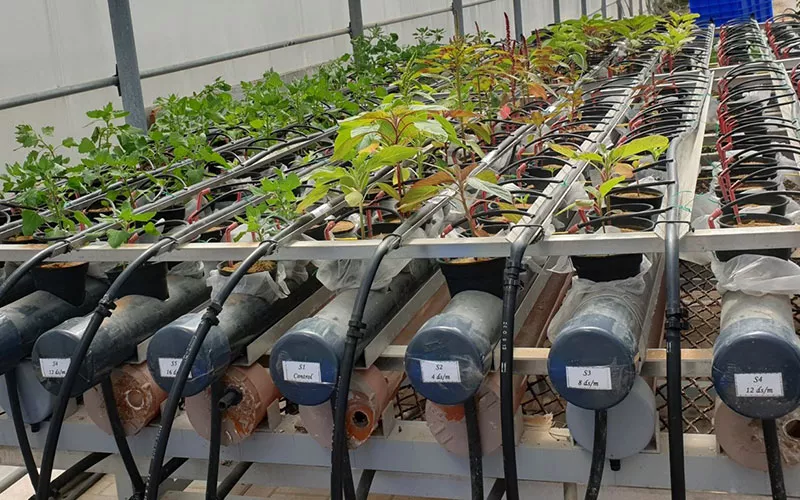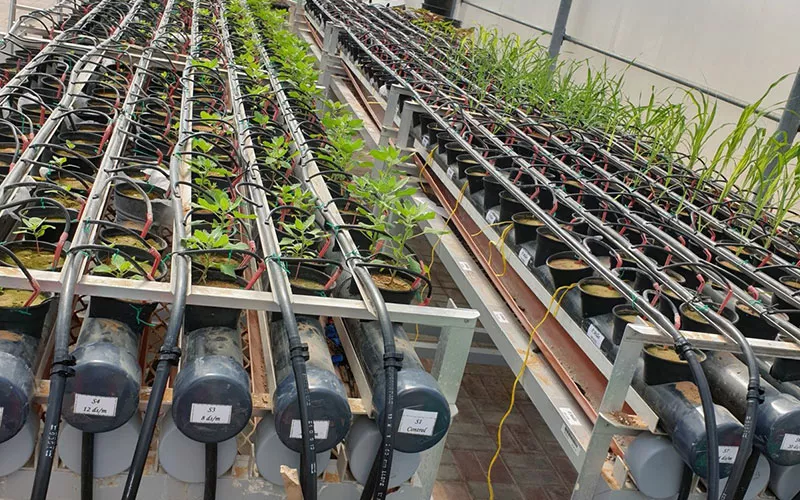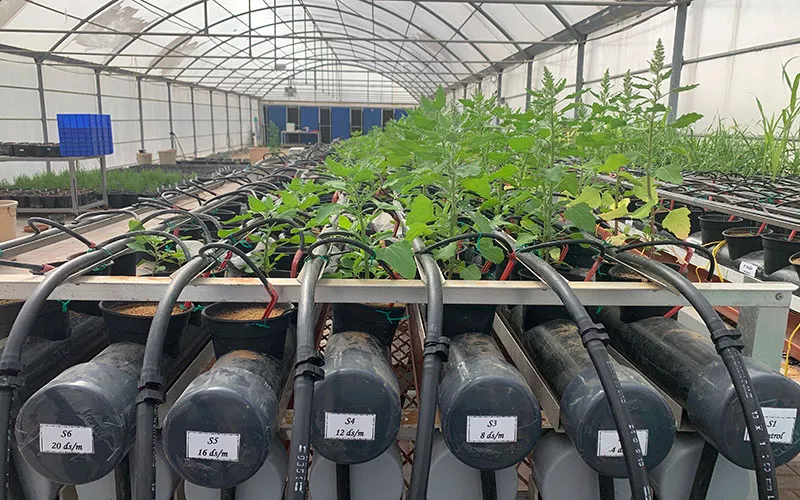Quantifying the Effect of Salinity Stress on Different Genotypes of Quinoa and Amaranth Compared to Barley, Pearl Millet, Sorghum and Finger Millet in Hydroponic System
Partners: Max Plank Institute
Project/Experiment Duration: 2019-2021
Objectives:
- Compare quinoa (Chenopodium quinoa) and amaranth (Amaranthus sp.) accessions with barley (Hordeum vulgare), pearl millet and sorghum for their salinity tolerance; and the relative salinity tolerance of quinoa with amaranth.
- Evaluate physiological parameters in different accessions under increasing salinity levels.
- Determine the range for the level of tolerance to salinity within the crops.
- Compare salinity tolerance of quinoa accessions in the diversity panel at germination and early seedling stages.
- Compare salinity tolerance in a mini core collection of sorghum.
- Compare salinity tolerance in a mini core collection of finger millet.
Date of Sowing: November 2019
Experimental Design: Systematic planting in a hydroponic system.
Set-ups:
- I: 7 salinity levels (0, 4, 8, 12, 16, 20 and 24 dS/m)
- II: 5 salinity levels (0, 4, 8, 12 and 16 dS/m)
Treatments: 1. Genotypic comparison:
- i. Quinoa vs Barley, Sorghum, Pearl Millet, Finger Millet - Setup I.
- ii. Quinoa vs Amaranth - Setup I.
- iii. Amaranth vs Barley, Sorghum and Pearl Millet - Setup II.
- iv. Core collection of Sorghum and Finger Millet - Setup II.
A wide range of short-term hydroponic experiments are conducted in the greenhouse (1). The current experiments are focused on:
- Comparing the salinity tolerance of quinoa (Chenopodium quinoa) and amaranth (Amaranthus sp.) accessions with that of barley (Hordeum vulgare), pearl millet and sorghum; as well as the relative salinity tolerance of quinoa with that of amaranth;
- Evaluating physiological parameters in different accessions at increasing salinity levels;
- Determining the range for the level of tolerance to salinity within the crops;
- Comparing the salinity tolerance of quinoa accessions in the diversity panel at the germination and early seedling stages;
- Comparing salinity tolerance in a mini-core collection of sorghum;
- Comparing salinity tolerance in a mini-core collection of finger millet.
Season
2019-2020
Research Theme













